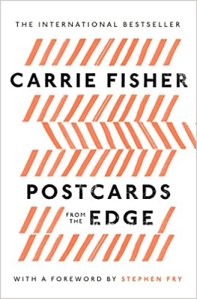
Today’s post is by author Brenda E Smith.
I realized a lifelong dream when I self-published my first book in August 2023. I followed all the marketing advice I received about entering the publishing world, including creating a website and selecting an email service provider. On the last page of my book, I added a reader magnet meant to collect email addresses of enthusiastic readers who would enjoy receiving my newsletters. Like many new authors, my original email list numbered about 100, primarily family, friends and work colleagues. I had a long way to go to reach the limit of 1,000 addresses allowed by the free version of my email service provider.
Learning about list-building promotions
During the first few months after launching my book, I collected 100 more email addresses, but at that rate, growing a substantial list would require marketing outreach help. But who could help me? In November, it thrilled me to discover a well-known book promoter’s list building giveaways. Their two-week long promotions include genre specific bundles of 6 or 7 ebooks. To sweeten the deal, one entrant also wins a free Kindle tablet, its image prominently featured in the advertisement for each promotion.
Authors pay $50 to have their book included in a bundled promotion. In return, the promoter guarantees the author a list of at least 250 new email addresses, though sample results of recent promotions on their website boast of generating 1,000 or more addresses. It sounded great, and not too expensive, so I signed up for an action/adventure-themed promotion.
How do they collect list names?
The promoter advertises giveaways through Facebook ads, their own reader email lists, and authors who share giveaway links on social media. On the contest entry page, the promoter requires all entrants to check a box indicating they agree to receive emails from the authors whose books are part of the promotion. This proactive opt-in is required by anti-spam policies of all email service providers. When the promotion period ends, the promoter randomly chooses three entrants to win the bundle of ebooks. One of them also wins the free Kindle.
Results of my first promotion
Initially, I felt overjoyed to receive the email addresses of 250 readers who entered the giveaway. In two weeks, I had doubled the number of names on my list. When I imported the giveaway addresses, I created a unique group for them within my subscriber database. I promptly sent a welcome email giving them the option to get my book for free during an Amazon promotion the following week. They also received five newsletters over the following three months.
It’s so easy, let’s do it again
When I signed up for a second, inspiration-themed list building giveaway in January 2024, the promoter sent 732 addresses to my quickly growing list. But adding these new addresses exceeded the number of addresses permitted by my free email account. To accommodate the new names, I reviewed and deleted addresses from the first action-adventure group that never opened any of the five subsequent emails I’d sent. It astounded me that nearly 75% hadn’t even opened the email offering the free ebook!
Violation of anti-spam notification
After culling out non-responsive emails from both the action-adventure promotion along with a few from other groups in my subscriber database, 870 names remained, including all the new addresses from the second list-building promotion. After sending a welcome email to the second group and two other newsy emails to the entire list, my email service provider notified me they had suspended my account because I had violated their anti-spam policy. This perplexed me because I’d added no one to my list that hadn’t proactively opted in.
Researching the suspension
Immediately, I replied to the investigator assigned to review my case, asking for an explanation. He told me I’d exceeded their limit for unsubscribes for the last email I’d sent and referred me to their terms and conditions. After digging deep into the minutia of the email service company’s anti-spam policy, I found a paragraph on account suspensions. It read, “We reserve the right to suspend your account immediately and start investigating your activity if your campaigns have a high percentage of spam complaints (more than 0.2%), bounces (more than 5%), unsubscribes (more than 1%) or very small open rate (less than 3%). If it turns out that you were sending emails without permission—we will terminate your account.”
I knew I had done nothing wrong while building my list. How could I control what people did once they were on my list? This punishment felt draconian.
How my unsubscribe rate got my account suspended
I opened and studied the analysis of my last campaign to 870 addresses. Twenty-five addresses had unsubscribed, 3% for that email. Because I had imported the email addresses from the list-building promotions as separate groups of subscribers, I could tell that all 25 unsubscribes came from those two promotions (along with four spam reports). But even worse, once again, 75% of the addresses from the second list-building promotion had opened none of the three subsequent emails I’d sent.
Confronting the book promoter
Straight away, I contacted the promoter to question them about the high proportion of names who never opened any of my mails, and to notify them that the high number of unsubscribed addresses had resulted in suspension of my email account. I asked how they obtained these email addresses if 75 percent wouldn’t open a welcoming email about “December Deals,” including an offer to get my ebook for free that they didn’t win.
My analysis: many of the people entering the contest aren’t interested in the books. They only wanted a chance to win the free Kindle tablet. I got an apology and a promise to look into my complaint.
Convincing my email service provider to reinstate my account
Meanwhile, I had to prove to my email service provider that none of the unsubscribed addresses had been added to my email list without their permission. I sent them a link to the promoter’s giveaway entry page so they could verify a block had to be checked off by anyone entering the contest, agreeing to receive emails from the authors. They then agreed I had not violated their anti-spam policy, although I had exceeded their unsubscribe limit. Grudgingly, they reinstated my email account with the stern warning that if it happened again, they would permanently shut down my account.
Protecting my email list
I went through and deleted all the accounts from both list-building promotions for fear that if just five more of the list-building addresses decided to unsubscribed in the future, my account would be shut down. The promoter’s director of global operations emailed me to thank me for my candid feedback and promised to continue to monitor the performance and impact of their promotions closely. I asked the promoter for a refund for the two list-building promotions, since I couldn’t trust that the addresses they provided had any value. They have not replied.
Lessons learned
I learned about list-building promotions the hard way and want other authors to avoid this potential pitfall. Many book promoters run these types of contests. When the prime attraction in their advertising is the shiny new ebook reader, they inevitably will attract entrants who are only after the grand prize. Despite checking the box to receive author emails, they may quickly turnaround and unsubscribe from author emails they receive (or worse, report them as spam).
Also, all email service providers set qualitative standards to prevent people from building email lists that deliver spam and clutter subscribers’ email boxes. I’ve discovered that other providers’ standards are less restrictive than my provider’s limits. It’s important that every author is aware of what their provider’s tolerance level is for unsubscribes, bounces, and spam reports.
List-building giveaways specifically hurt authors whose base email lists are small, because doubling or tripling their size from promotions, where the addresses are not people genuinely interested in their books, puts those authors at a higher risk of violating email service policies when those people unsubscribe. For authors with larger established email lists, unsubscribes from list-building promotions may not exceed the email service provider’s qualitative caps. Still, what author, regardless of whether their list is large or small, wants to pay for non-responsive addresses from promoters?
If book promoters are serious about helping authors, they must realize that featuring valuable non-book prizes might provide an incentive for the wrong type of people to enter their giveaways. Also, they must be diligent about monitoring the quality of the addresses they are adding to their lists, weeding out addresses that repeatedly enter giveaway promotions for every genre, so authors receive only addresses of bonafide readers interested in their book.
Brenda E Smith is the author of Becoming Fearless: Finding Courage in the African Wilderness (August 2023). Her essays have also appeared in the Rivers of Ink Anthology: Literary Reflections on the Penobscot and the Goose River Anthology 2022. After a successful career as a Certified Public Accountant and as a CFO for an adventure travel company and several non-profit organizations, she has found a new passion in writing. While earning her MS in Philanthropy and Media at Boston’s Suffolk University, she co-produced, co-directed and co-edited an episode for the PBS series The Visionaries shot in Kenya and Tanzania. Brenda also teaches classes for Maine’s consortium of Senior Colleges on how effective writing alters neural networks in the brain to make a story unforgettable. Learn more about Brenda and read her blogs at eyeopenerpress.com.






